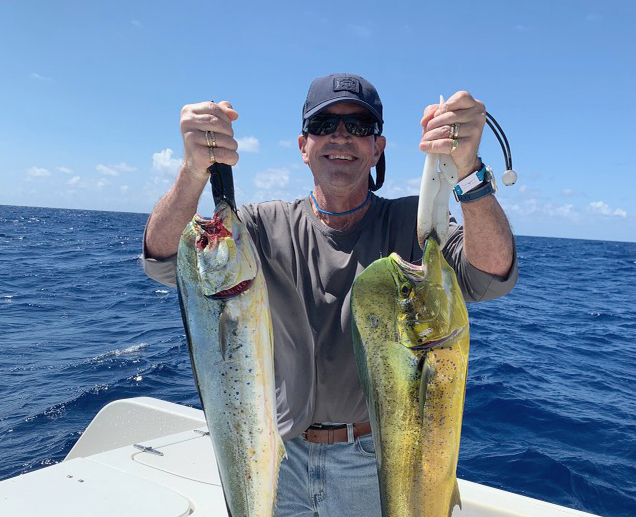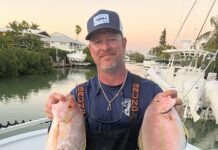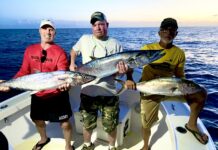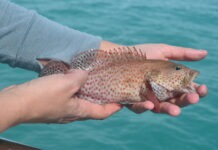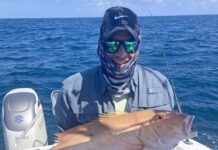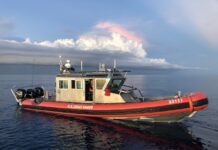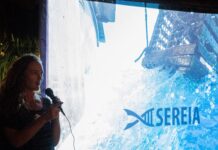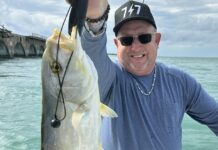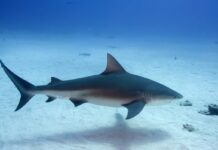Florida is the fishing capital of the world, and the Florida Keys are the fishing capital of Florida. During spring break, more boats and anglers flood the keys than any other time of the year. Here are some tips to keep in mind while fishing near people and places in the Middle Keys:
Marathon Humps: On a smooth day this time of year, it’s not rare to show up at the Marathon Humps and share the small underwater mountain range with more than 50 other vessels. Most vessels are at the Marathon Humps to target the same fish: blackfin tuna. Some boats are live baiting, vertical jigging, trolling or electric deep-dropping. No matter what technique, most vessels are jockeying to drift or troll over the highest peak of the hump, which is about 485 feet deep at its highest point and slopes down to 1,000-plus feet deep. As the eastbound current rushes over the mountain peak, it pushes bait over, with gamefish stacked up to attack on the backside ledge. It’s best if all boats go directly with or directly against the current, trying to stay 100 yards away from each other. Most importantly, don’t run over other vessels’ trolling gear or drift lines, and if they’re live baiting, don’t run through chummed live baits.
Wrecks and artificial reefs: This time of year it’s not rare to show up at wrecks like the Thunderbolt or artificial reefs like the Seven Mile Rubble Pile – both in about 115 feet – and find a dozen or two boats jockeying to be directly over the wreck or rubble pile. Sometimes there’s a dive boat or fishing boat anchored up directly over them too. Usually the rule is to stay 100 yards away from another vessel, but in this case some vessels get closer to have a legit shot at schooling permit, African pompano, wahoo and jacks. As far as ethics: if someone is anchored on the wreck or rubble pile with a dive flag flying, go to another spot. No fish is worth hitting a diver with your prop or hooking a diver. If an angler is anchored up, stay out of their chum line. If you are drifting and sight casting or bottom fishing, stay far enough away so you won’t cast over other boats’ lines.
Patch reef flatlining: At places like the “26 line” or the “Parking Lot” (two of many well-known patch reefs) it’s common to see a couple dozen boats anchored on these relatively small locations. It’s almost impossible to stay 100 yards away from another vessel; however, if you are going to get closer than 100 yards, stay even with the vessel next to you, and under no circumstances should you go through another vessel’s chum line. Don’t anchor in front of or behind another vessel that is flat lining for yellowtail.
Residential canals and private marinas: On windy or rainy days when you want to fish near port, you’ll see some boats fishing in and around canals and marinas. The 100-yard rule always applies when fishing near private marinas or cleaning stations, but many locals strongly discourage this practice. Resident marina fish are treated like dock pets for several captains and marina owners, and tourists are attracted to the feeding shows that occur when boats return to the dock. Most homeowners are not fans of the practice either, as sinkers can hit their boats or lines and other gear can break off on their docks. If you choose to fish a dock light at night, be prepared to have the homeowner come out and use a few choice words. Even though nobody can own the water, it’s important and ethical to respect people’s property, and making bad judgments in this situation gives all anglers a bad name.
Bridge Fishing: It’s tarpon season now and when the tide and weather is right, you may find a tarpon boat in every slot on the Seven Mile Bridge. You can be an ethical bridge tarpon angler by remembering to get your baits out of the way in time so that you don’t cross lines with someone who has come off of anchor to chase a tarpon near your boat. Sometimes you may even have to come off of your own anchor to clear the path for a vessel chasing a hooked tarpon. Only one boat per bridge span – “stay a bay away” – seems to be the unwritten rule when tarpon fishing at the bridge.
Trash: Crowded waters this time of year unfortunately means more trash in the water. If you see a plastic water bottle or a chum box floating by and you can take 10 seconds to grab it and throw it away in your boat’s trash can, awesome job. If everyone does their part to snatch trash out of the water here, it will help our ecosystem survive and thrive.
(Editor’s note: the Instagram account @trash_trophies loves to support locals removing trash from Keys waterways. Take a picture or video and tag them!)
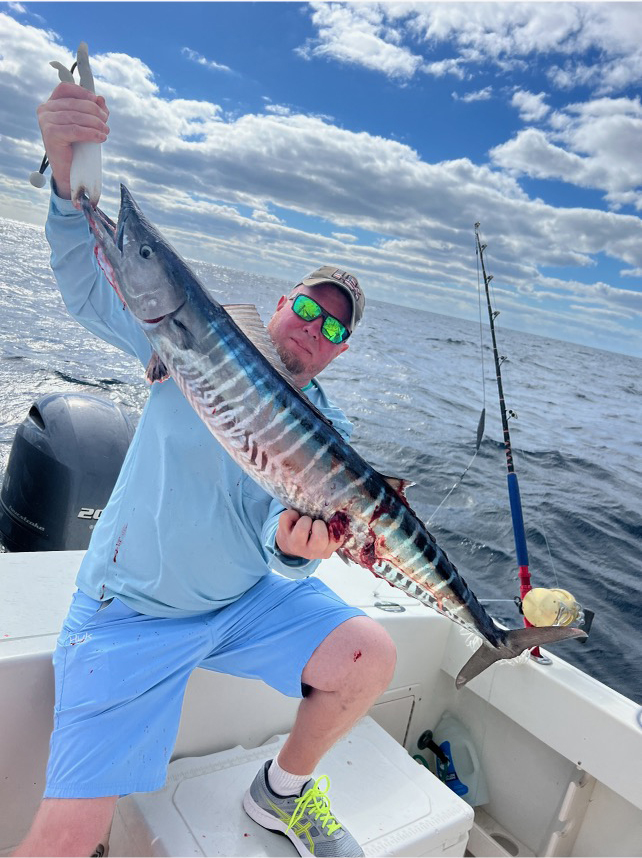
With all the spring boat traffic, it’s sometimes difficult for all anglers to get along. These “rules” above are my own opinions passed down over generations. Use common sense, stick to your rules and remember that no matter how ethical you are or try to be, you may not please everyone all the time. You will run across anglers who don’t share well with others or think they own the water. All you can do is do your best!
To book a charter with Ana Banana, call or text Capt. Joel at 813-267-4401 or Capt. Jojo at 305-879-0564, or visit anabananafishing.com.















